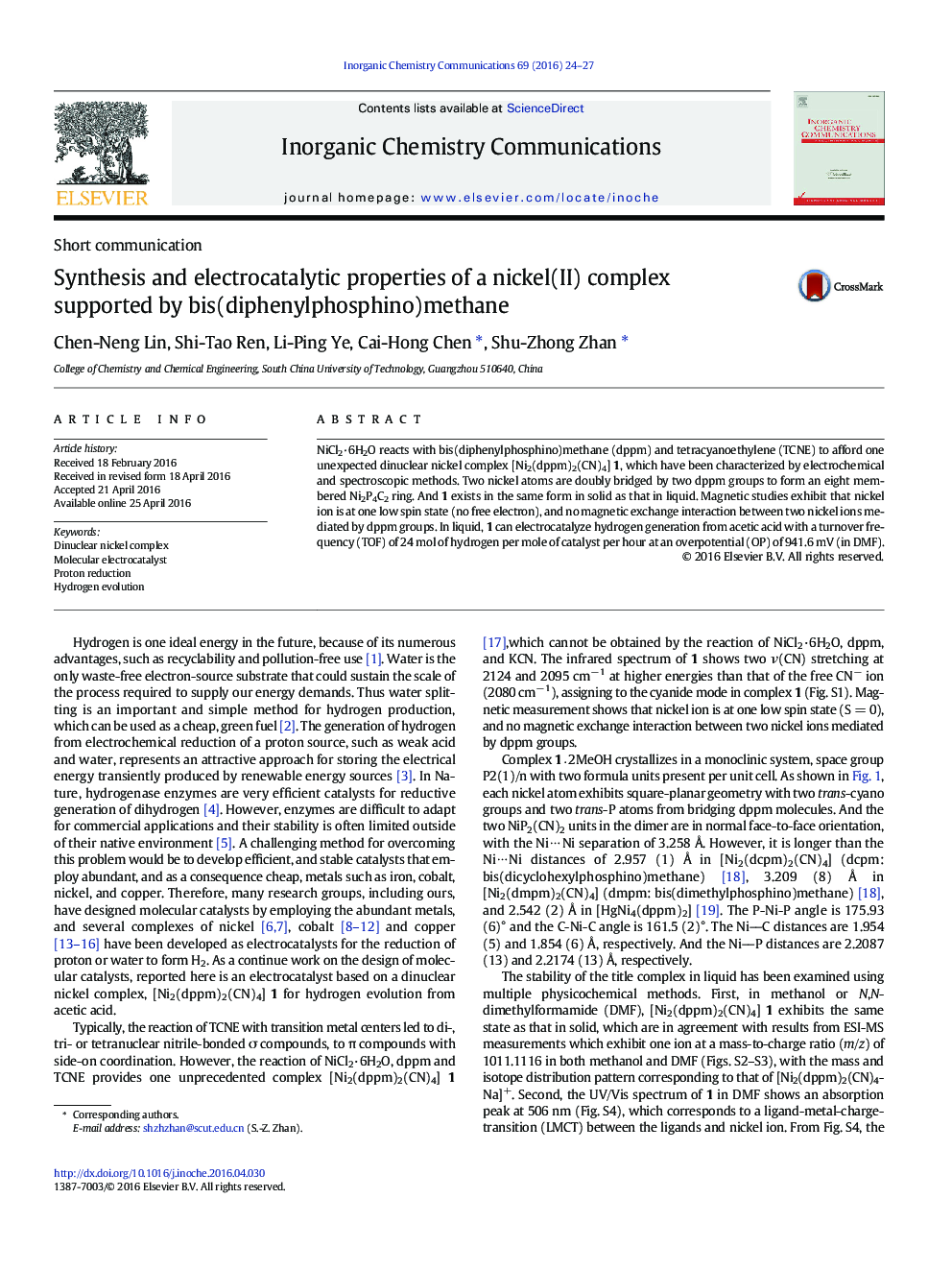| Article ID | Journal | Published Year | Pages | File Type |
|---|---|---|---|---|
| 1303153 | Inorganic Chemistry Communications | 2016 | 4 Pages |
•NiCl2·6H2O reacts with dppm and TCNE to afford one unexpected dinuclear nickel complex [Ni2(dppm)2(CN)4] 1.•Two nickel atoms are doubly bridged by two dppm groups to form an eight membered Ni2P4C2 ring.•1 exists in the same form in solid as that in liquid.•1 can catalyze hydrogen evolution from acetic acid.
NiCl2·6H2O reacts with bis(diphenylphosphino)methane (dppm) and tetracyanoethylene (TCNE) to afford one unexpected dinuclear nickel complex [Ni2(dppm)2(CN)4] 1, which have been characterized by electrochemical and spectroscopic methods. Two nickel atoms are doubly bridged by two dppm groups to form an eight membered Ni2P4C2 ring. And 1 exists in the same form in solid as that in liquid. Magnetic studies exhibit that nickel ion is at one low spin state (no free electron), and no magnetic exchange interaction between two nickel ions mediated by dppm groups. In liquid, 1 can electrocatalyze hydrogen generation from acetic acid with a turnover frequency (TOF) of 24 mol of hydrogen per mole of catalyst per hour at an overpotential (OP) of 941.6 mV (in DMF).
Graphical abstractA new molecular electrocatalyst based on nickel complex [Ni2(dppm)2(CN)4] 1 is formed by the reaction of NiCl2·6H2O, bis(diphenylphosphino)methane (dppm) and tetracyanoethylene (TCNE) for hydrogen evolution from acetic acid.Figure optionsDownload full-size imageDownload as PowerPoint slide
